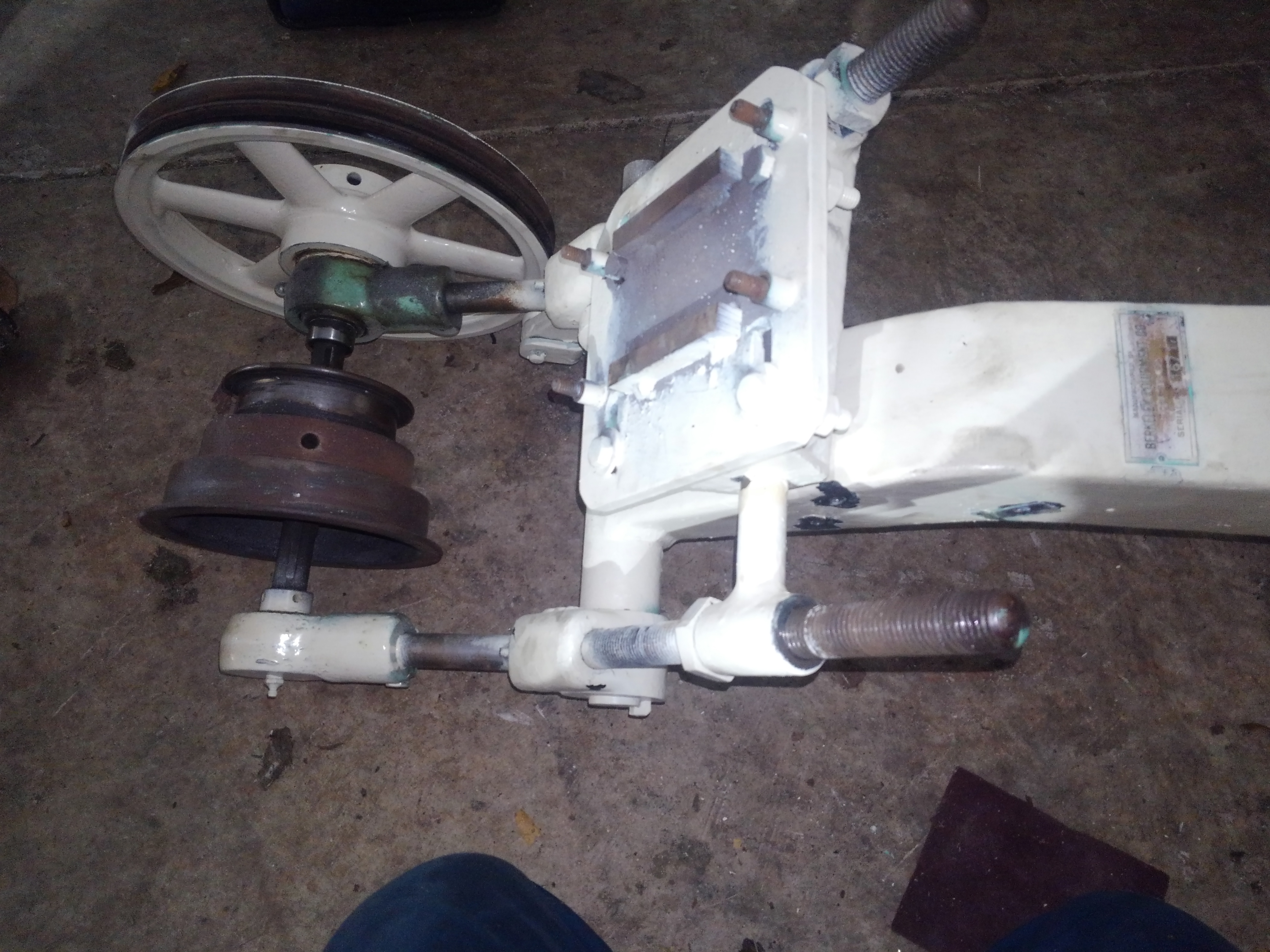I have a Champion Blower & Forge blacksmith's forge, and two Champion post drills, and a Champion belt driven grinder (has tight & loose pulleys). I have noticed that Champion tried to move with the times. By the 'teens, they were offering sets of taps and dies, along with their line of blacksmith's shop equipment. Camelback drills was a natural fit into their line, and basic engine lathes had to have been the next logical step. As noted, with the move from horse drawn conveyances and horse drawn implements to automobiles, tractors, and more mechanical farm implements, adding a lathe to the product line was a logical step. South Bend was already there, advertising their lathes in publications for owner/operators of automotive or similar repair shops.
While a Champion Blower and Forge lathe is not the most common maker, I kind of doubt it is really rare. Uncommon would be how I'd describe a Champion Blower & Forge lathe. Champion Blower & Forge was a prolific builder of blacksmith shop equipment, and had quite a marketing network. In the USA, we had "the big three" for blacksmith shop equipment: Buffalo Forge, Champion Blower & Forge; and, Canedy-Otto. Buffalo went after the market share for equipping school shops, and also was big into the industrial and HVAC blower industry. With that came a line of steam engines made by Buffalo Forge, first to drive the blowers, and then sold for other uses. Buffalo made a line of camelback drills, and got into making "Ironworkers" for structural and boiler fabrication work. Canedy-Otto took a tack more similar to Champion, producing a full line of Blacksmith's tools, but also developing a full line of drill presses.
Champion Blower & Forge, to my knowledge, was the only US blacksmith tool manufacturer to offer a screw-cutting engine lathe in their product line. Canedy-Otto offered a bench-top shop for home tinkerers with some ridiculously light duty lathe (non screw cutting, probably bought from some other firm & marketed by C-O).
I would guess that Champion had a company such as Wells, or Greenfield producing their tap and die sets. The engine lathes may well have been built in Champion's own plant since they already had a pattern shop and iron foundry in-house. I do not think that lathes, as a product, ever really were a big seller for Champion, but I would not think that they are really all that rare. Reverse-engineering a basic cone-head lathe from the designs in widespread use at the time was not difficult to do, and the basic design features of this type of lathe were not so unique as to be protected by patents. Things like the quick change gearbox, design of mechanism in the lathe apron, or some unique design of the headstock were the kinds of features that were protected by patents. Champion built a very basic screw cutting lathe. Nothing unique about it.
Champion was going after blacksmith and auto repair shops rather than machine shops for their lathe market. Champion had a good sense of their market and what type of lathe they could build in-house and expect to sell to their market. I, for one, was surprised a few years back when I learned that Champion had built and marketed screw cutting lathes, but it did make sense to me. On the other hand, Champion was probably realistic enough to know that there was no way they were going to compete with the likes of South Bend, Seneca Falls, and numerous other builders of light-duty cone head lathes. They were going on the strength of their reputation with blacksmiths-turned-repair garages.
Where I think Champion really swept the field was in the sales of rivet forges. With their distinctive blower design, it is easy to spot the Champion rivet forges in old photos and in youtubes made from old newsreel or documentary footage. I recall seeing some old footage made into a youtube of riveting on an overseas job, and there were the Champion rivet forges.
Buffalo Forge transitioned over to the industrial blower sector of their business and kept on building ironworkers and drills right up to the end of their company in the 1970's (if I recall the approximate time correctly). Champion ceased to exist when the market for their blacksmith shop equipment dried up. I do not think the lathes, as a product line offered by Champion Blower & Forge, lasted too long even when Champion itself was a healthy company.



